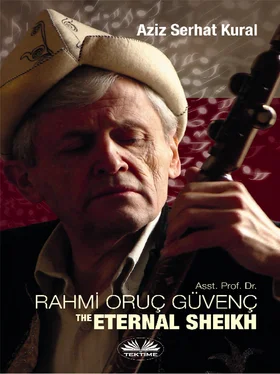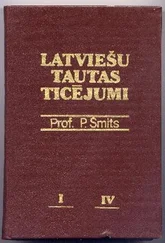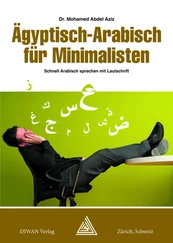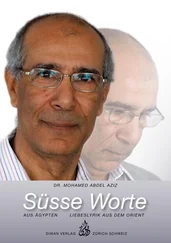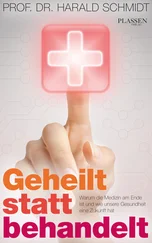Here I want to go into the science of genetics a little. As you know, people who are descendants of His Holiness Hasan , Grandson of our Prophet (mPbuH), are called Sharifs and descendants of His Holiness Huseyin, His other grandson, are called Seyyids. During the development of modern genetics, the family tree of Seyyids has been investigated. The Y-DNA haplogroup can determine a paternal ancestor who lived ten thousand or so years ago. The Y-DNA haplogroups are formed through thousands of years of mutations of the Y-chromosome that is transferred from father to son. Haplogroups are identified with letters. The J1e haplogroup and some of its subclades belong to the Seyyids20. The J1 haplogroup is the main haplogroup in the Middle East and - yes you are not mistaken - it is also very common in Dagestan. Genetic research is verifying the journey taken by the ancestors of His Holiness Seyyid Ahmed Husamettin. In Dagestan, where Tatars21 comprise a very large portion of the population, the J1 haplogroup has been very clearly identified as over 90% 22 in some clans.
The family tree of His Holiness Sheikh Husamettin is given below:
The family tree of Seyyids, who form the genealogy of our Prophet and are known as Ehl-i Beyt (the Household of the Prophet (mPbuH)), is depicted below with birth and death dates up to His Holiness Seyyid Ahmed Husammetin, 40th grandson of our Prophet (mPbuH):
| Her Holiness Fatima (mPbuH) |
(608-632) |
| His Holiness Huseyin (mPbuH) |
(625-682) |
| Seyyid Ali Zeynelâbidin |
(658-712) |
| Seyyid Muhammed Bakyr |
(676-732) |
| Seyyid Jafer Sadyk 1 |
(699-765) |
| Seyyid Mûsâ Kâzym 1 |
(745-799) |
| Seyyid Ali Ryza |
( 760-S IS) |
| Seyyid Muhammed Cevad |
(SI0-S35) |
| Seyyid Ebû afer Ali Hâdi |
(829-867) |
| Seyyid Jafer Mahdi |
(849-933) |
| Seyyid Ebulkasym Muhammed |
(867-940) |
| Seyyid Abdulhâlyk 1 |
(883-965) |
| Seyyid Abdullah El Katim |
(952-1004) |
| Seyyid Muhammed Ebû Tayyib |
(975-1018) |
| Seyyid Abdulhâlyk 2 |
(1010-1084) |
| Seyyid Ali Zeynelâbidin |
(1033-1075) |
| Seyyid Ebunnecâ Hasan |
(1055-1116) |
| Seyyid Ebû Abdullah Mûsâddyk |
(1095-1153) |
| Seyyid Kureysh Bin Muhammed |
(1141-1209) |
| Seyyid Ebulmecd Abdullah |
(1182-1249) |
| Seyyid Ebû Tahir Ibrahim |
(1235-1277) |
| Seyyid Ebul Abbas Abdullah |
(1257-1330) |
| Seyyid Isâ Ahrâr |
(1285-1348) |
| Seyyid Ebuuhâshim Suleyman |
(1307-1370) |
| Seyyid Ebû Ali Ahmed Bagdadî |
(1354-1409) |
| Seyyid Ebul Avn Mustafa Ahrâr |
(1369-1443) |
| Seyyid Ismail |
(1398-1452) |
| Seyyid Ibrahim |
(1423-1501) |
| Seyyid Mûsâ Kâzym 2 |
(1442-1502) |
| Seyyid Muhammed Zâhid |
(1463-1538) |
| Seyyid Jafer Zeki 2 |
(1490-1535) |
| Seyyid Dâvud |
(1519-1606) |
| Seyyid Ebû Hamza |
(1558-1597) |
| Seyyid Kasym |
(1589-1643) |
| Seyyid Ebû Hâmid Hasan |
(1611-1688) |
| Seyyid Ali Haidar |
|
| Seyyid Muhammed Mushtak |
(1694-1775) |
| Seyyid Sefer |
(1754-1824) |
| Seyyid Said Rukâlî |
(1788-1871) |
| Seyyid Ahmed Husameddin |
(1848-1925) |
| Seyyid Mehmed Ismetullah OZTURK |
(1882-1952) |
| Seyyid Mûsâ Kâzym OZTURK |
(1913 until 25 May 1996) |
Returning to our story, His Holiness Fazyl Bey was called up for his military service and sent to join a unit in Balıkesir along with hundreds of other soldiers. The moment he got off the train, someone came up to him and asked, “Are you Fazyl?”. When he answered “Yes”, this person said, “Let’s go!”. Because Fazyl Bey was a dervish, he followed this person without asking any questions. They went together to His Holiness Seyyid Ahmed Husameddin, from whom Fazyl Bey received spiritual guidance throughout his military service.
One day, under the direction of His Holiness Seyyid Ahmed Husameddin and under the watch of his cousin Hafız Agabey ( who was also in charge), His Holiness Fazyl Bey went up a few steps in the house where they were and entered a chamber in order to carry out a term of seclusion (Halvet)23. On entering the chamber, he realized he was in fact on board a spaceship. He travelled and received guidance on this spaceship for 2000 years. When he returned, he found that no more than 3 days or a week had passed. His accounts of these journeys were very interesting. According to his narrations, there was life on the planet Mars. He also made references to some moon stones and, most interestingly, he stated that on one of the planets they reached, ants had established a very advanced civilization.
Sheikh Ezel Oruc Bey sitting on the Sheikh’s Hide (Post) with His Sheikh Cloak, written ratification (ijazet), he mace of Arslan Bey and other depictive artifacts.
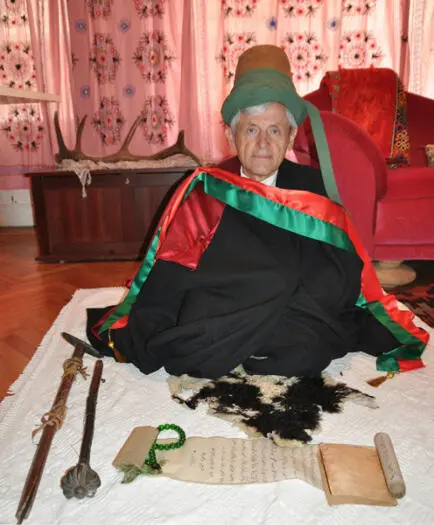
One day during the Eid al-Adha (The Sacrifice Festival), he said “What a shame that we kill and eat these animals”, to which his Sheikh answered: “Their meat ascends in our (human) bodies.”
On another occasion when His Holiness Fazyl Bey and his Sheikh were taking a stroll, they saw two olive kernels thrown by the side of the road. His Sheikh cleaned them with his hands and ate them, saying: “These kernels wait 2 thousand years to be able to pass through a human throat.”
After Yasar Guvenc graduated from his school, he went to Konya on an errand and received news of Fazyl Bey’s death.
When Oruc Bey came to Istanbul for his university education in 1960, he became acquainted with Turgut Baba24 (Turgut Soylemezoglu) through Halil Konuralp. Turgut Baba claimed to be the last apprentice of Ahmed Jelaleddin Dede, who happened to be the last Mentor of the Galata Mevlevihane25 in Istanbul. Oruc Bey had the opportunity of receiving guidance on Sufism (Tasavvuf) from Turgut Baba, with whom he stayed for a year or two. When Turgut Baba stopped teaching Oruc Bey, it left him feeling suspended in a void and of his own accord he embarked on fifty or sixty days of seclusion (Halvet). During this period of Halvet, he had a series of dreams and became acquainted with Ziya Efendi (Ziyaeddin Kudur), also known as Ayar Baba, in whose house he spent five or six months living in a cell that was allocated to him. His Holiness Ziyâ Efendi was a Mentor for the Sâdî Order and had also been granted permission to teach the beliefs and customs of the Kadirî, Ushshakî, Mevlevî, Bektashî and Rufaî orders26. After a while, Ziyâ Efendi granted Oruc Bey permission to teach the paths of these orders and also presented him with an ijazet (written ratification) to teach the path of the Sâdî order. The last section of this icazet contains the following story by His Holines Sadeddin Cibavi, written in slightly different words and in Ottoman script.
“It was rumoured that Saadeddin Cibavi, who had settled in the village of Cebâ between Havran and Damascus, had become involved in local banditry. His father Sheikh27 Yunus esh-Sheybanî, who became very troubled on hearing that his son was even chief of these bandits, went into Halvet and prayed for his son’s redemption. These prayers were answered and Sadeddin gave up his sinful activities, repented and embarked on the path of his father’s order.
Читать дальше
